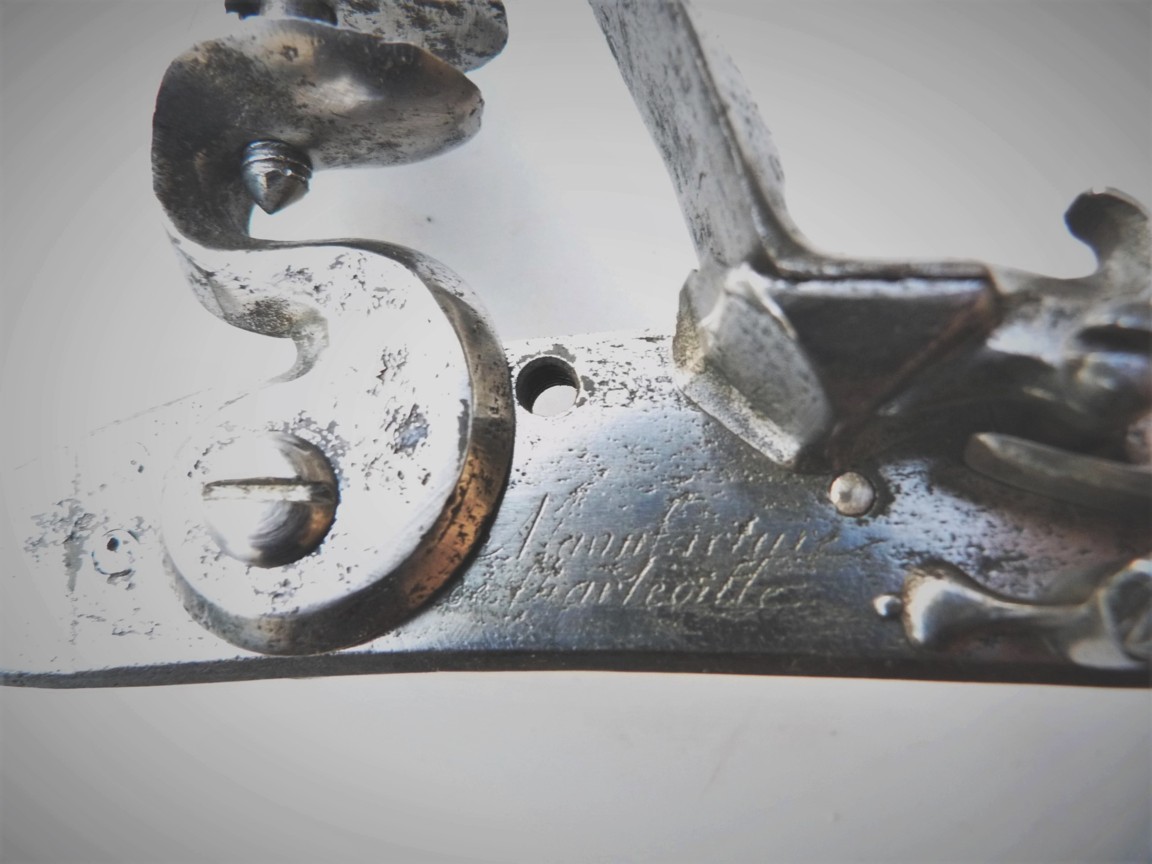MANUFACTURE ROYALE DE CHARLEVILLE
The Manufacture had obtained the title of "Royale" as early as 1688; but it seems that all the arms of the Ancien Régime only bear the mention "Manufacture de Charleville".
During the French
Revolution, several communes in France were renamed (about 1,200 towns or
villages) with a revolutionary name.
By a
decree of 25 Vendémiaire Year II (October 16, 1793), the National Convention
(September 1792-October 1795) asked the "communes that had changed their name
since the time of 1789 to pass the new name to the division committee".
The city of Charleville was baptized Libreville on 23 Brumaire 1793 and renamed Charleville in 1796. This means that the weapons with the signature "Manufacture de Libreville" were manufactured between 1793 and 1796.
This change of name is desired by the revolutionary authorities : the names of the municipalities beginning with "Saint" or "Sainte" are changed, due to dechristianization, and those that evoke feudalism and the symbols of the Ancien Régime, the decree of 1793 "inviting" the municipalities that wish to change the names that can "recall memories of royalty, feudalism or superstition, to deal with it immediately."
Ugo
MANUFACTURE ROYALE DE CHARLEVILLE
As a preamble, here is the well-documented presentation of my friend Jean
Louis Gillier - La Pistole:
The Charleville arms factory
The city of Charleville benefits from an important artisanal gunsmithing
tradition in the 17th and 18th centuries. In 1667, Louvois, Secretary of State
for War, asked the city of Charleville (founded in 1606) to reserve its
gunsmithing production for the King.
In 1675, a store became an annex of the Royal Weapons Store of the
Bastille in Paris.
Two major weapons factories were to be established in Charleville. They
would supply the armies with rifles and ammunition.
In 1688, the Charleville factory became the “Royal Manufacture”. Victor
Fournier, the owner, son of Toussaint Fournier, director of the city's police,
thus became the exclusive supplier of firearms to the King, to the detriment of
independent manufacturers.
Under the First Empire, production became considerable.
As early as 1822, the decision was taken by the artillery committee to
abandon Maubeuge, Charleville and Klingenthal.
In 1836, the Royal Manufacture of Charleville, considered too close to
the borders, closed its doors. St Étienne would benefit from it.
Copyright - Jean Louis Gillier - La Pistole - 2012
This Manufacture had obtained the title of "Royale" as early as 1688;
however, to our knowledge ALL the arms of the Ancien Régime only bear
"Manufacture de Charleville".


Photo 1 & 2: Model 1822 officer's pistol
For the fruitful year 1770-71, let us mention:
-the Model 1770 pistol of a constabulary officer, bearing the arms of
France with thunder (most having been filed down during the Revolution)

Photo 3: Model 1770 pistol of a constabulary officer, view G
-The last avatar of the pistols of the Gardes du Corps of the Ancien
Régime, made in 1771 (barrel still with the A crowned Alphand punch mark.


Photo 4 & 5: Model 1770 pistol of a Garde du Corps

Photo 6: two (fake pair) of this little-known model


Photo 7 & 8: the Model 1770 pistol of a constabulary officer

Photo 9: (bad) detailed view, Model 1771 pistol of the Royal-Carabiniers

Photo 10: barrel marking of a very rare mod 1741 (?) of the same body

Photo 11: the two previous pistols
FFA
MANUFACTURE ROYALE DE CHARLEVILLE
FRENCH MODEL 1816 T OFFICER'S PISTOL:
Lock very well marked "Mre Rle de Charleville. Faint inspector stamp on left side.
Photographs friendly authorized by Antiquefirearms.com with my grateful thanks.









